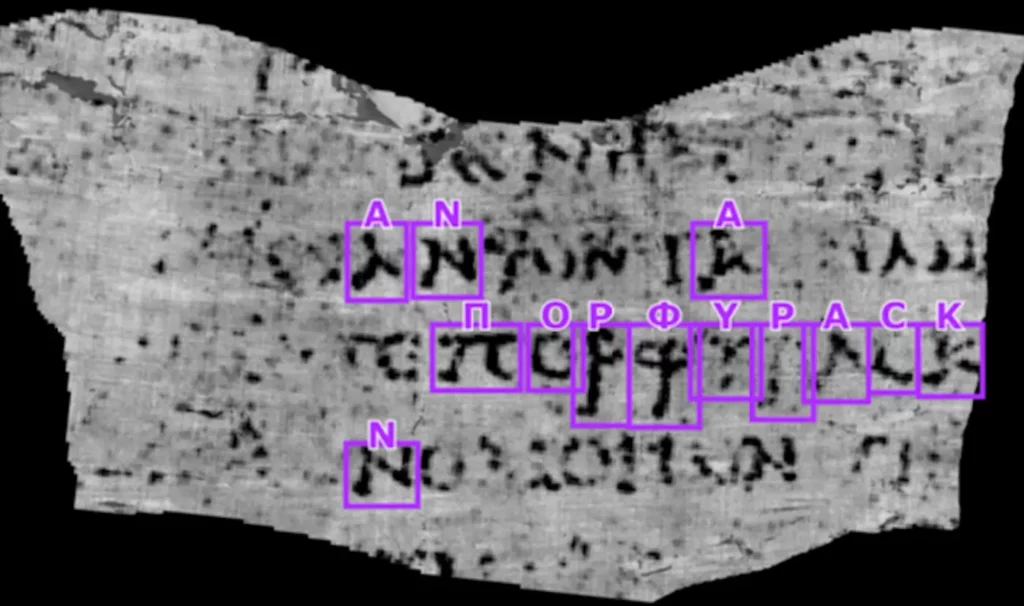
In the year 79 AD, Mount Vesuvius erupted with a fury that buried the Roman towns of Pompeii and Herculaneum under layers of ash and pumice. Among the ruins of Herculaneum, archaeologists later discovered a library filled with hundreds of ancient scrolls. Like everything around them, these manuscripts had been carbonized by the volcano’s heat, turning them into fragile, blackened lumps that crumbled at the slightest touch. No scholar dared to touch them. For centuries, their secrets remained locked away — until now.
Using a combination of 3D X-ray imaging and artificial intelligence, researchers have digitally “unrolled” a number of these scrolls, revealing text that hasn’t been read in nearly two millennia. Most recently, they opened a new scroll, known as PHerc. 172, housed at the University of Oxford’s Bodleian Libraries. It is one of three Herculaneum scrolls in the library’s collection, donated in the 19th century by Ferdinand IV, the king of Naples and Sicily.
“We are thrilled with the successful imaging of this scroll,” said Dr. Brent Seales, a co-founder of the Vesuvius Challenge, a competition that has spurred dramatic progress in deciphering the scrolls. “This scroll contains more recoverable text than we have ever seen in a scanned Herculaneum scroll.”
Reading a rolled scroll without touching it

The scroll’s condition made it impossible to physically unwrap. Instead, researchers turned to Diamond Light Source, a synchrotron facility in Oxfordshire, UK. Inside this massive, donut-shaped machine, electrons are accelerated to nearly the speed of light, producing powerful X-rays that can probe the scroll’s interior without damaging it.
“It can see things on the scale of a few thousandths of a millimetre,” Adrian Mancuso, director of physical sciences at Diamond, told The BBC. The resulting 3D reconstruction allowed researchers to identify the scroll’s layers — about 10 meters of tightly wound papyrus — and digitally separate them.
But the real challenge lay in detecting the ink. Both the papyrus and the ink are made of carbon, making them nearly indistinguishable. Here, artificial intelligence stepped in. The AI scanned for the faintest traces of ink, then digitally highlighted the faint letters, bringing the ancient text to light.

The newly imaged scroll, PHerc. 172, contains the Greek word διατροπή, meaning “disgust,” repeated twice within a few columns. While much of the text remains to be deciphered, scholars are optimistic. “It’s an incredible moment in history,” said Richard Ovenden, Bodley’s librarian at the Bodleian Libraries. “Librarians, computer scientists, and scholars of the classical period are collaborating to see the unseen.”
“We can tell the entire scroll is full of text,” said Stephen Parsons, project lead for the Vesuvius Challenge. “Now we can work on making it show up more clearly. We’re going to go from a handful of words to really substantial passages.”
Unrolling the past
Last year, a team of three students — Youssef Nader, Luke Farritor, and Julian Schilliger — won the Vesuvius Challenge’s $700,000 grand prize by deciphering over 2,000 Greek letters from another Herculaneum scroll. The scroll is believed to be a work of philosophy, likely written by the Epicurean philosopher Philodemus. It’s thought to have explored Epicurean ideas about pleasure, questioning whether it arises from abundance or scarcity, or from the minor or major elements of an experience.

For Nicole Gilroy, head of book conservation at the Bodleian, the project is deeply personal. “I just love that connection with whoever collected them, whoever wrote them, whoever rolled those scrolls up and put them on the shelves,” she said. “There’s a real human aspect to it that I just think is really precious.”
Unlike other ancient texts, which were often copied and recopied over centuries, some of these scrolls are likely originals, preserved exactly as they were nearly 2,000 years ago. Their contents could shed light on the philosophical debates, literary tastes, and daily lives of the Roman elite.
But the work is far from over. Researchers are calling for more human and computing ingenuity to fully decipher the scrolls. “We’re confident we will be able to read pretty much the whole scroll in its entirety,” said Parsons. “And it’s the first time we’ve really been able to say that with high confidence.”


